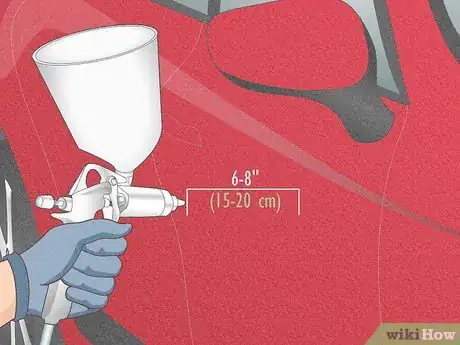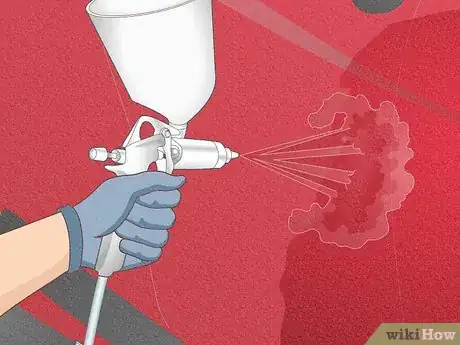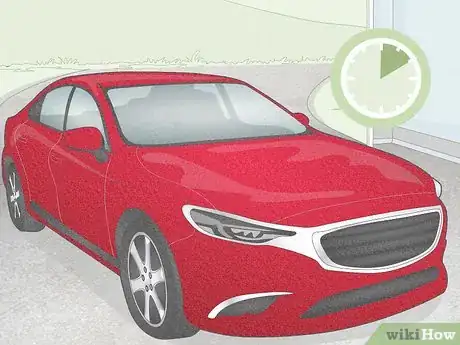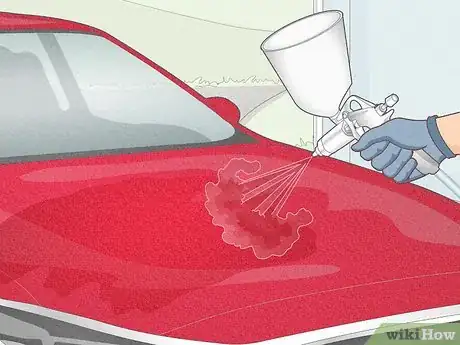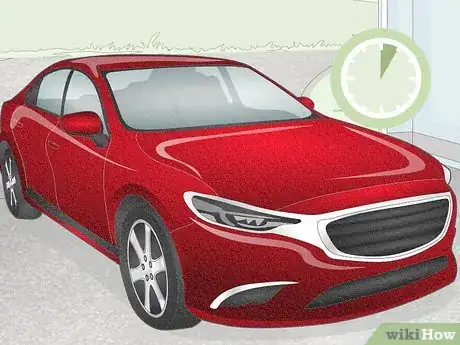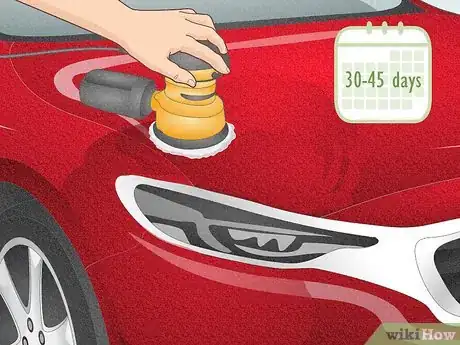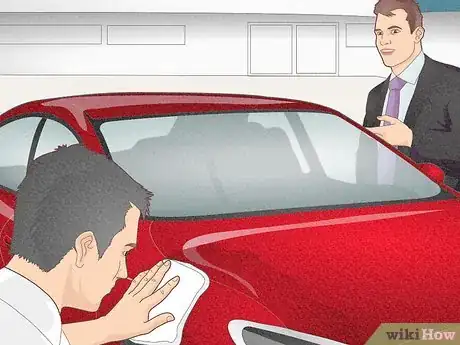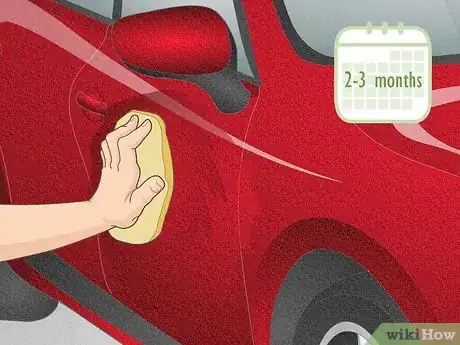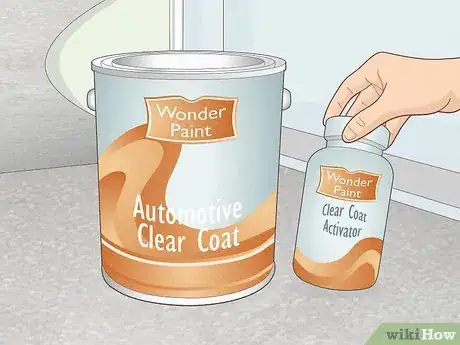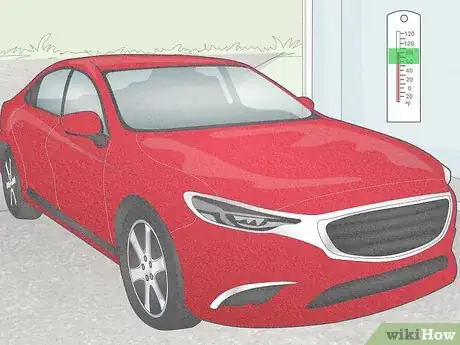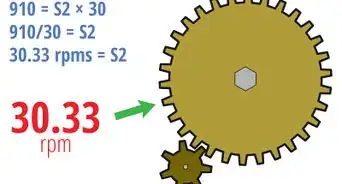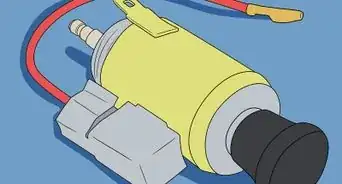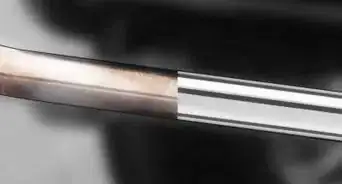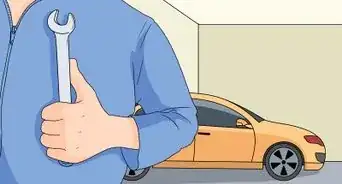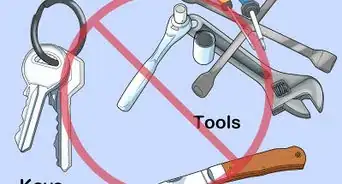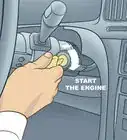This article was co-authored by Angel Ricardo. Angel Ricardo is the owner of Ricardo's Mobile Auto Detail headquartered in Venice, California. With over 10 years of experience in mobile detailing, Angel continues to attend auto detailing trainings to improve his customer service and auto detailing skills.
There are 10 references cited in this article, which can be found at the bottom of the page.
wikiHow marks an article as reader-approved once it receives enough positive feedback. In this case, several readers have written to tell us that this article was helpful to them, earning it our reader-approved status.
This article has been viewed 135,676 times.
Clear coat is a transparent paint that goes over your base coat and protects it from damage and UV rays. It also gives a glossy finish that deepens the base color quality and lets you easily buff out small scratches. Before you paint, make sure to choose quality equipment and mask off the body of the car before sanding off any previous damaged clear coat. Spray the car with thin, wet coats of clear coat paint and let them dry between layers. To keep your new clear coat looking fresh, make sure to gently wash and wax it on a regular basis.
Steps
Spraying the Car Body
-
1Hold the spray gun 6 to 8 inches (15 to 20 cm) away from the surface. If you go over a section where the surface of the car is tilted, tilt the gun as well in order to be parallel to the surface. This should give you the lightest, most even paint layers possible.[1]
-
2Make steady, even passes that overlap each other by 50%. Covering half of the previous pass each time will help you achieve an even application and prevent the “tiger striping” effect. Make sure to spray on the paint in consistently straight, even lines across the car surface.Advertisement
-
3
-
4Let the paint dry for at least 10 minutes. With thin individual layers of paint, the drying time is fairly short between applications. Waiting a full 10 minutes between coats will help the paint settle and set, or “flash,” before it’s covered by another layer.[4]
-
5Apply a second coat of paint to the entire car. After the first layer has dried, add a second layer of paint. This layer can be a bit thicker because it will have more time to dry out completely.[5] Make sure to apply the paint slowly and carefully to avoid any drips and imperfections.
-
6Wait 1 hour for the layers to fully dry. Don’t touch the clear coat while you’re waiting for it to dry. Let it sit undisturbed in order to let the paint cure and set properly. This will help ensure the clear coat’s durability and quality.
Clear Coat Maintenance
-
1Hand wash your car every 1-4 weeks. Use a quality wash mitt, 2 buckets of washing and rinsing water, car-wash soap, and microfiber towels to wash your car regularly. Take extra care to be gentle over the clear coat and remove any dirt buildup that could cause scratches.[6] It’s best to wash your car sooner rather than later to remove any dust and dirt that could damage your clear coat.
-
2Wait 30-45 days before waxing, buffing, or going through a carwash. After applying clear coat, it’s important to wait and let the paint harden before applying too much pressure. For warmer climates, waiting 30 days should be sufficient. However, for cars in colder climates, you should wait 45 days because low temperatures can slow the curing process.[7]
-
3Ask car wash employees to take care with your clear coat. Clear coat can be easily scratched during a ride through an older car wash. If the car wash includes a manual rub-down, make sure the attendants use clean, soft towels on the clear coat.
- Typically, modern car washes are gentler and won’t scratch your clear coat.
-
4Wax your clear coat carefully every 2-3 months. Excessive buffing and rubbing can damage the clear coat, so make sure to use a non-abrasive formula and polish carefully. Waxing regularly helps protect the paint job and visually enhances the paint quality.[8]
- Generally, car wax only lasts about 2-3 months, but depending on the weather and the car’s paint condition, this time may vary.
Painting Materials
-
1Choose a solvent and activator for your current weather conditions. Think about size and area of the repair as well as the current temperature and humidity when making your choice.[9] Some products are formulated for higher temperatures and extra moisture, so make sure to check the product labels. Keep in mind that you should also try to paint in optimal conditions.
-
2Try to paint on a warm day. In general, it's not a good idea to paint your car if you’re in temperatures above 90 °F (32 °C) or below 55 °F (13 °C). You should also avoid painting in direct sunlight by painting in the shade, in the early morning, or at nighttime.[10]
-
3Use quality car-painting equipment. For this project, higher quality tools will likely be worth the extra cost. You can buy or rent a gun, compressor, respirator, and air/oil separator along with an air hose.
- Clear coat is best applied with a spray gun because it acts like a solvent. If you try to apply it with pressure, rather than floating it on with an aerosol tool, it can remove the base coat beneath it.
- You could also use clear coat in a spray can, but a gun will give you a smoother, more professional finish.
-
4Wet-sand off all of the previous clear coat if it is damaged. Look for any peeling, delaminating, or flaking in the old clear coat. If you find damage, use 400-600 grit sandpaper and an orbital sander to wet-sand off all of the old clear-coat. It’s important to start over with a base coat for the new urethane to bond properly.[11]
- To wet-sand, spray your sandpaper down with water. This will prevent the sandpaper from creating deep scratches in the car’s surface.[12]
- Wipe down the surface with a tack cloth after sanding to clean up any dust.
-
5Practice spraying on a smooth piece of scrap metal. Before you spray your car, test out your materials and practice your spraying technique on a smooth metal surface. Follow all the steps from start to finish, making note of any issues or imperfections that you should adjust for the final project.
- If you’re using a can of spray clear coat, make sure to shake it well before spraying.
Expert Q&A
Did you know you can get expert answers for this article?
Unlock expert answers by supporting wikiHow
-
QuestionWhy is it important to wax your clear coat?
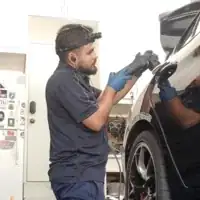 Angel RicardoAngel Ricardo is the owner of Ricardo's Mobile Auto Detail headquartered in Venice, California. With over 10 years of experience in mobile detailing, Angel continues to attend auto detailing trainings to improve his customer service and auto detailing skills.
Angel RicardoAngel Ricardo is the owner of Ricardo's Mobile Auto Detail headquartered in Venice, California. With over 10 years of experience in mobile detailing, Angel continues to attend auto detailing trainings to improve his customer service and auto detailing skills.
Auto Technician
-
QuestionIs it OK to go to a car wash after a paint job?
 Angel RicardoAngel Ricardo is the owner of Ricardo's Mobile Auto Detail headquartered in Venice, California. With over 10 years of experience in mobile detailing, Angel continues to attend auto detailing trainings to improve his customer service and auto detailing skills.
Angel RicardoAngel Ricardo is the owner of Ricardo's Mobile Auto Detail headquartered in Venice, California. With over 10 years of experience in mobile detailing, Angel continues to attend auto detailing trainings to improve his customer service and auto detailing skills.
Auto Technician
-
QuestionWhat's the benefit of car wax?
 Angel RicardoAngel Ricardo is the owner of Ricardo's Mobile Auto Detail headquartered in Venice, California. With over 10 years of experience in mobile detailing, Angel continues to attend auto detailing trainings to improve his customer service and auto detailing skills.
Angel RicardoAngel Ricardo is the owner of Ricardo's Mobile Auto Detail headquartered in Venice, California. With over 10 years of experience in mobile detailing, Angel continues to attend auto detailing trainings to improve his customer service and auto detailing skills.
Auto Technician
Warnings
- Always use protective equipment when painting, such as rubber gloves, a chemical respirator, and safety goggles.⧼thumbs_response⧽
- Make sure to paint in a well-ventilated area to avoid inhaling hazardous paint fumes.⧼thumbs_response⧽
- Automotive paint is extremely hazardous, so make sure to keep it away from children.⧼thumbs_response⧽
- Always read the directions and warnings on the product labels.⧼thumbs_response⧽
References
- ↑ https://youtu.be/4dXZOMHsx_k?t=54
- ↑ https://youtu.be/4dXZOMHsx_k?t=44
- ↑ https://youtu.be/4dXZOMHsx_k?t=92
- ↑ https://youtu.be/4dXZOMHsx_k?t=90
- ↑ https://youtu.be/4dXZOMHsx_k?t=51
- ↑ http://www.best-auto-detailing-tips.com/car-clear-coat.html
- ↑ https://drivingtests101.com/articles/how-to-spray-automotive-clear-coat
- ↑ http://www.best-auto-detailing-tips.com/car-clear-coat.html
- ↑ https://youtu.be/4dXZOMHsx_k?t=21
About This Article
If you want to apply a clear coat to your car, make sure to pick a day when the temperature won’t rise above 90 degrees Fahrenheit and avoid painting in direct sunlight or you might ruin the finish. When you’re ready to apply your clear coat, hold the spray gun 6 to 8 inches away from the surface of your car. Keep the gun tilted parallel to the surface and if you come to a section with an angle, adjust your grip so the gun remains aligned. As you go around your car, overlap each pass by 50 percent to ensure an even application and prevent tiger striping. After you’ve applied a full coat, let the paint dry for 10 minutes before applying a second coat. Once the car has 2 coats, give it an hour to fully dry before touching it. For more advice, like how to take care of a clear coat, read on!
